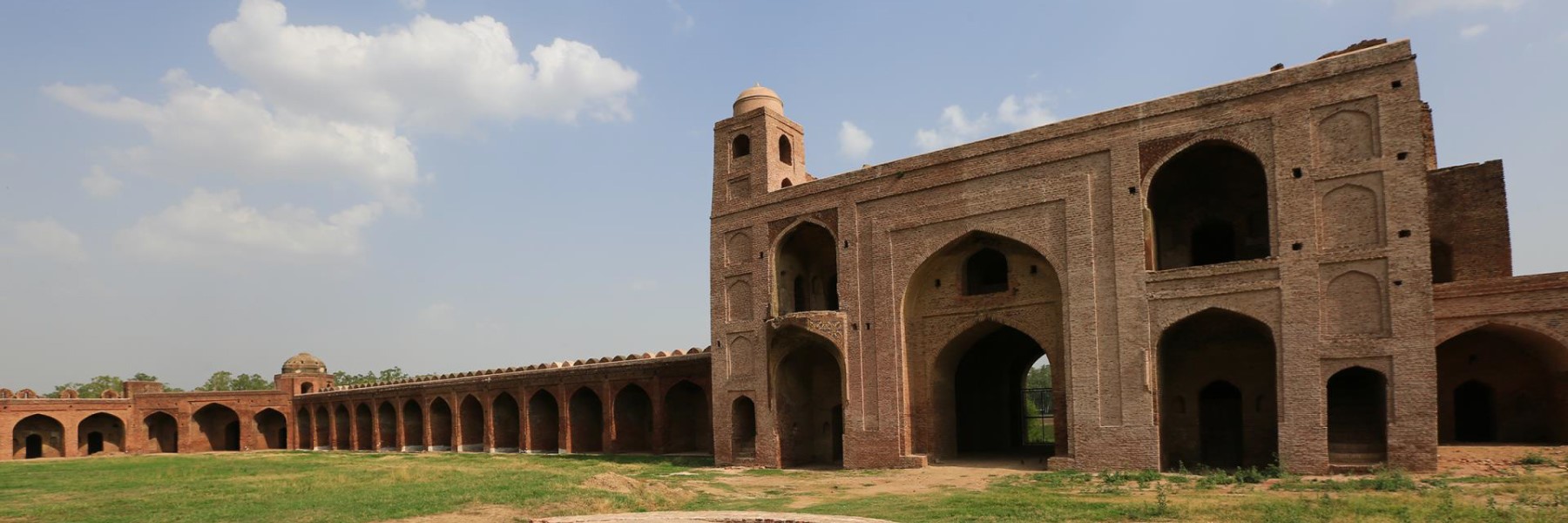
From a rich history to a profound culture, the city of Patiala, in Punjab, boasts majestic art and architecture. From finest buildings, including the Moti Bagh Palace and the Sheesh Mahal, to the most notable schools of Hindustani classical music, the Patiala gharana that produced the likes of Ustad Ali Bux and Ustad Bade Ghulam Ali Khan, the city offers much to the quintessential traveller. For shoppers, Patiala is a right delight and offers jutis (embroidered shoes), parandis (coloured braids) and nallas (silken drawstrings). Netaji Subhash National Institute of Sports that was set up within the Moti Bagh Palace after independence is said to be the largest sports institute in Asia.The most ostentatious ruler of the erstwhile princely state, Maharaja Bhupinder Singh, is said to be the first Indian to own an aeroplane. Armour And Chandeliers Museum One of the most notable of its kind in the state, the Armour and Chandeliers Museum houses many heritage riches, chief of which is elegant Bohemian cut-glass chandeliers. These were brought by Maharaja Mohinder Singh, the ruler of the erstwhile princely state of Patiala (1852-1876). Another attraction to look out for is a four-wheeled silver alloy chariot that belonged to Maharaja Bhupinder Singh (1900-1938). This gorgeous chariot was built in 1909, in Kolkata, and was drawn by six horses. It was mainly used on ceremonial occasions. The museum's armament section is just as amazing and holds a remarkable collection of arms including a seven-barrel bolt-action gun, a jade dagger that belonged to Guru Gobind Singh and a sword used by Nadir Shah, a powerful ruler of Iran (1736-1747). The museum can be visited between 10 am and 5 pm Bahadurgarh Fort Lying on the outskirts of the city, the majestic Bahadurgarh Fort is a prominent tourist attraction. Built in the 17th century by first settler nawab Saif Khan during the reign of Mughal emperor, Aurangzeb, the fort is believed to have been called Saifabad. There are many notable Islamic-style monuments near the fort, including the Diwan-e-Aam and an elegant mosque. Tourists can also visit the nawabs tomb that lies a stones throw from the fort. It is said that the fort was renamed later on to commemorate the stay of the ninth Sikh Guru, Guru Tegh Bahadur. Thus, it is called the Bahadurgarh Fort now. With time it was renovated and a gurdwara was built by Maharaja Karam Singh of Patiala in the 19th century. Since 1989, the grounds of the fort serve as the Punjab Police Commando Training School. Sarai Mughal Situated in Shambhu village, Mughal Sarai was built by Sher Shah Suri as a rest stop along the busy trade route, now recognised as the Grand Trunk Road. It is believed to be the emperor's most ambitious project. The large compound of the sarai has two majestic gates and a two-storeyed mosque. A deep well and a baradari are located just outside and are open for the use of passing travellers. The lush and well-laid gardens act a respite from the heat for visitors, who can come and relax here. Another heritage site that one can stop over at is the majestic Bahadurgarh Fort, lying on the outskirts of the city. It was built in the 17th century by the first settler nawab Saif Khan during the reign of Mughal emperor, Aurangzeb. Bir Bhunerheri Wildlife Sanctuary Abounding in flora and fauna, the Bir Bhunerheri Wildlife Sanctuary boasts a variety of species like blackbuck, sambar, blue bull, hog deer, porcupine, jackal, jungle cats and a variety of partridges, dove, parakeets, spotted owlet, quails and pigeons, amidst the rich growth of mixed deciduous trees like kikar, shisham and jamun that give shelter to wildlife. Declared a wildlife sanctuary in 1972, it was the erstwhile hunting grounds of the princely state of Patiala. Located on the outskirts of Patiala, the sanctuary is sprawled over an area of 661 hectare and is divided into two by a road running through it. Of the total area of the sanctuary, about 240 hectare has been fenced. It is a serene and lush forest where one can spot wildlife at close quarters. Sheesh Mahal Lying a stone's throw from the Old Moti Bagh Palace, the Sheesh Mahal is a sprawling structure that is three-storeys-high. It reflects vestiges of both European and Mughal styles of architecture. This palatial structure was constructed by Maharaja Narendra Singh, a Jat ruler of Patiala (1846-1858) to give space to artists, poets and scholars who regularly visited his court. Today, Sheesh Mahal has been converted into a museum that holds a remarkable collection of art and sculpture. You can also find miniature paintings, carved metal and ivory artefacts from Kashmir, Tibet, Punjab and Burma. The taxidermy gallery in the museum is a must-visit and holds an eclectic collection of mounted animals and birds. There are many manuscripts here as well, chief of which is a copy of Gulistan Bostan, believed to be the greatest Sufi classic that was once owned by Mughal emperor Shah Jahan. Its pages are illustrated in gold and it is indeed a symbol of the opulence of the rulers of that time. An interesting feature of the museum is its medal gallery that houses one of the largest numbers of decorations and medals in the world.
© Bonjour Media. All Rights Reserved.